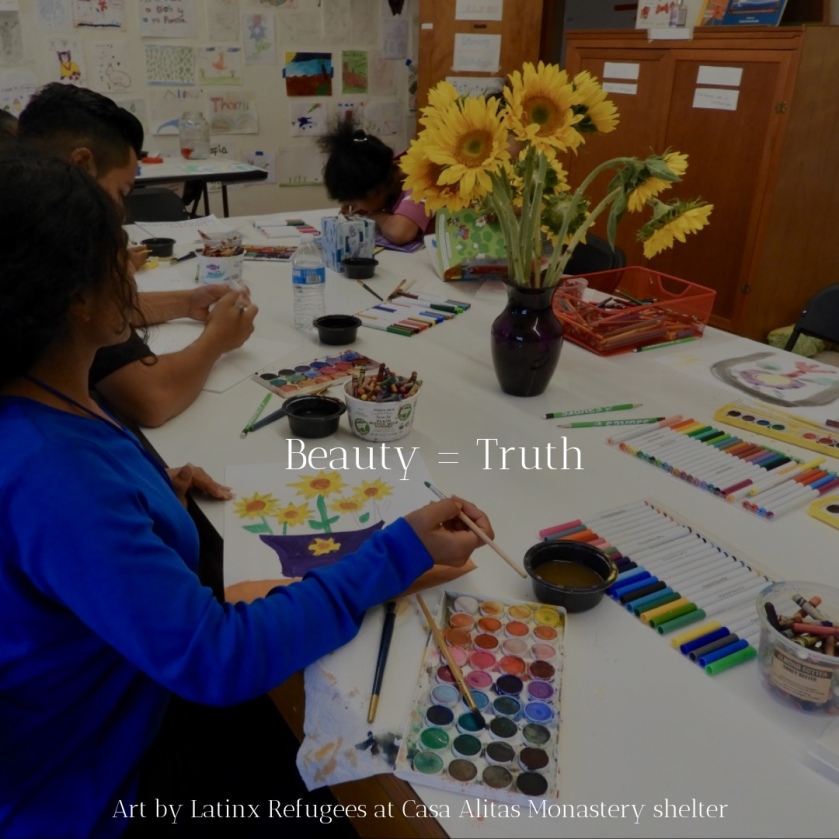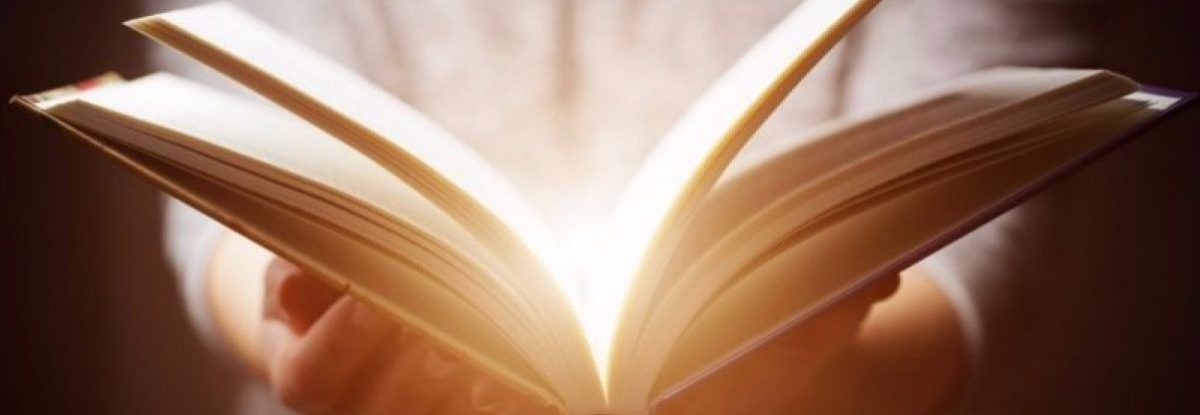
“Draw What you Love, Dibuja lo que Amas,” with refugee youth at the Casa Alitas monastery shelter, a philosophy that embraces hope and healing is foundational to our Arts and Activities program. We promote well-being and foster resiliency in the short term with activities that engage our guests and lend a bit of calm in the chaos of family displacement.
“Hope & Healing: The Art of Asylum at the Monastery”
“Hope & Healing: The Art of Asylum at the Monastery” is an exhibit of Artwork created by young Asylum seekers from Central and South America since 2014 at the Casa Alitas short-term shelter in Tucson. In 2019, the Casa Alitas shelter expanded into Tucson’s historic Benedictine Monastery re-purposed to accommodate larger groups of guests.
A former sewing room in the monastery once used by the Benedictine Sisters to cut cloth for their habits was converted into an Art & Activities classroom, a rare blessing, unavailable to most bare-bones shelters at the U.S. border. The Activities room is a clean, orderly, light-filled space for children and adults, a pocket of peace to experience temporary respite, make art, and study essential English.
Since opening in 2014, Casa Alitas observed that refugee guests would use whatever was available, scraps of paper, pencils, and crayons to draw. All the walls at the small shelter became covered with spontaneous art, drawings that expressed gratitude and hope for a safe and secure future in their new country.
Instinctively, we human beings express ourselves through shape and color, line and form when language is not sufficient to explain or describe our experiences. Within the refugee community, where many guests speak indigenous dialects only and verbal communication can be challenging, the universal language of Art is a saving grace.
In the monastery, guests draw while they wait on line for an intake interview, for something to eat, or for a ride to the bus station and the children draw all the time. Like the branches of the great tree of life, Artwork by guests has leafed out to cover the walls of all the common areas of the monastery.

Draw What You Love
Young guests draw what’s in their hearts. They draw prayers to God for having spared them and multiple thanks to volunteers. They paint homes, loved ones, and pets left behind. Drawings rich in symbols – paintings of birds in flight, volcanoes erupting, roads and rivers, vehicles and barriers – testify to the trauma of migration and family displacement. Yet, through it all, we see the color of hope: bright flowers and rainbows and smiling faces: hope for family reunification in a new country, free of fear.
The deceptively simple prompt to “Draw what you Love, “arose from seeing and listening to what is most important and most healing to our guests. The children draw and paint quietly, reverently with singular focus and intention. They are intent on conveying what cannot be said in words. Their feelings rise up and through their art regardless and their visual testimonies are honest, authentic, and inarguable.
The very act of art making, trusting in spontaneity and mastering materials empowers youth who feel powerless in the face of migration and family separation. In turn, the language of line and the poetry of painting helps us imagine the lived experience of Mexican, Central, and South American refugees, the trauma and loss they’ve experienced, and the mystery and wonder of their faith against all odds.

In this exhibit, viewers can also witness the beauty of feminine forbearance in the face of adversity through the handwork of our guests. Casa Alitas Art & Activities creates space for Home craft: contemplative needlework and cultural crafts that honor indigenous and familial skills, and support camaraderie among women.
A good example of this familial camaraderie is the Arizona Esperanza quilters who have made lap quilts for our guests since 2018. In 2019 they collaborated with Monastery Arts volunteers to gather the children’s art and thread their individual drawings into unified quilts of care and protection. The quilts displayed here are but a few of their offerings.
Perhaps the most profound power of the art in this exhibit lies in the frontier between the artist and the viewer. Deep in the borderlands of shared imagination, if we can get past our own filters and open ourselves up to the mystery of grace, through the art of our new neighbors and the fresh eyes of youth, we are able to transcend language, time, and geography.
Valarie Lee James, Volunteer, Casa Alitas Arts & Activities Coordinator Summer 2019, Tucson

Val, I so wish I could be there to see this. And I am so happy that I was able to help and participate for those few hours back in March.
I hope you and Steph are well. Keep doing your good work.
Love, Barbara
>
LikeLike
I remember your beautiful smile that day you joined us at the monastery and how you pitched right in. We are as inspired by the children as they are by the art, no? No matter how exhausted I might be at the end of the day, it’s the most gratifying work I’ve ever done. I am so honored to be able to be a part of this experience at this time in our history. I wish everyone in the U.S. could participate with our new neighbors in this way. In addition to opening our eyes, this work is exceptional medicine for the soul for us all!
LikeLike
This is wonderful, Valarie. Thank you for your good work with the migrant children at the monastery! I’ve got the reception on my calendar.
Peggy
On Thu, Jun 27, 2019, 8:26 PM Art & Faith in the Desert wrote:
> artandfaithinthedesert posted: ” “Draw What you Love, Dibuja lo que Amas,” > the practice I instituted with refugee youth at the Casa Alitas monastery > shelter: a child-centered philosophy that embraces hope and healing is > foundational to our Arts and Activities program. We promote well-b” >
LikeLiked by 1 person
I’m so glad you can make it to the opening. It’s going to be rich in honesty and beauty. I’m looking forward to seeing all the work together in one space myself. Te veo alli!
LikeLike
I found this post from your article for America Magazine. The paragraph that begins “We are all makers” clarified what my heart has been doing since the deaths of my Mom and Aunt. Just yesterday I started teaching my daughter to stitch. I am in Indiana but I want to help. What can I do to support the healing and connection of art? Where do the supplies come from and how are they funded? What resources are available to help these women sell their work? How can I help support these families?
LikeLiked by 1 person
Cindy, Thank you so much for your comment and your good heart. 🙂 To answer your questions, We all pitch in down here to cover the supplies the women need. You can also look up “Bordado” on youtube and support the makers. It may be the only way , besides swap meets, that they can offer their work in this country. If you want to directly help our program, you could contribute to Casa Alitas here: https://www.ccs-soaz.org/agencies-ministries/detail/alitas-aid-for-migrant-women-and-children. Mark your donation “Bordado/Embroidery Program at Casa Alitas.” On a personal level, it sounds like your own work is devotional. Every stitch can extend a prayer to the women in Honduras and here in this country. Thank you so much for your support!
LikeLike